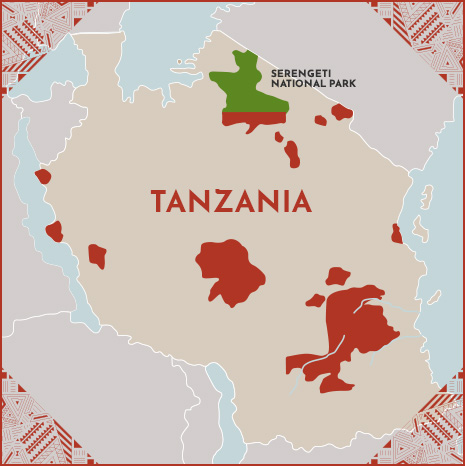Tanzania is a case of success regarding Nature conservation and endangerous species protection. The country soon understood that they have been presented with some of the greatest natural wonders to be found on Earth. And quickly they learned how to conserve them and take good care of them.
In fact, many conservation works have been done here, specially those related with fighting Elephant Hunting and saving one of the most endangerous species in the world, the Black Rhino. Jane Goodall also become famous for her pioneer work with the Chimpanzees at Gombe Stream National Park.
Blessed by nature with 14 national parks (there are even more, but these ones are the most famous) one can found everything in Tanzania. Tanzania is what comes to your mind when you think of Africa. There are parks that are as large as many european countries like the Serengeti National park and Selous Game Reserve. There are parks, like Katavi National Park or Ruaha National Park that are so untouched by humans they reassemble the descriptions of Africa by white hunters and missionaires who came here centuries ago. Parks where you can have a million of acres just for yourself and see more lions than people. There are parks like Gombe Stream National Park or Mahale Mountains National Park where you will be able to see large groups of Chimpanzees and Gorillas. There are parks like Saadani National park where you can join pristine beaches and the wild bush. Other parks, such as Ngorongoro Conservation Area with its Ngorongoro Crater have a beauty that is so stunning, so breathtaking that it is impossible to put into words. And what about Kilimanjaro National Park? Where you can see giraffes with the world's tallest free standing mountain, the roof of Africa, in the background? Well, there are really parks for every taste and interest and we haven't even spoke about Zanzibar, with world class beaches of white sand and turquoise warm water. Tanzania is definitely one of the top destinations of the world.
In the following map, you can see the 14 national parks. To learn more about each one and see what we recommend, move your mouse over the map and click in one park.


















